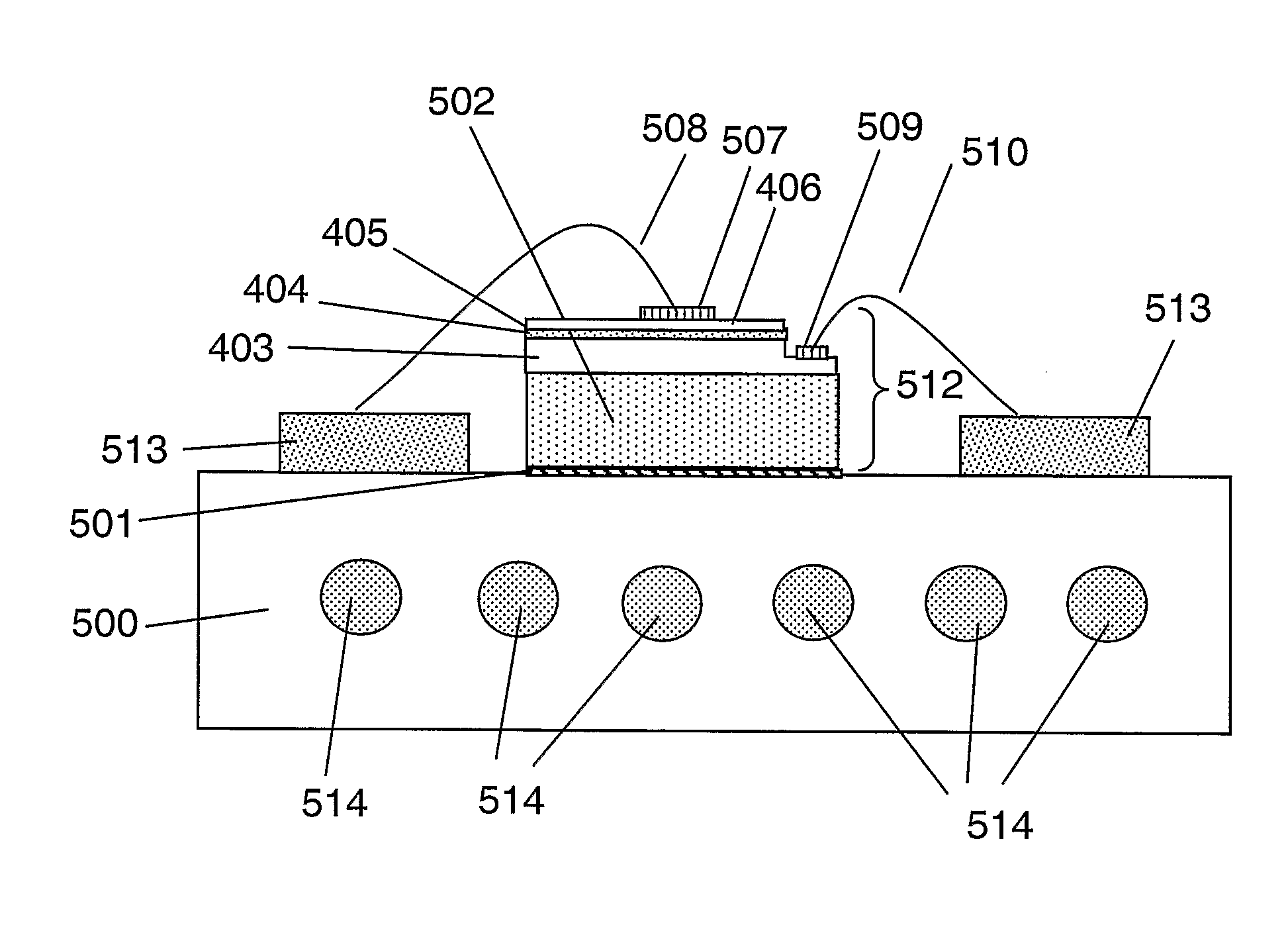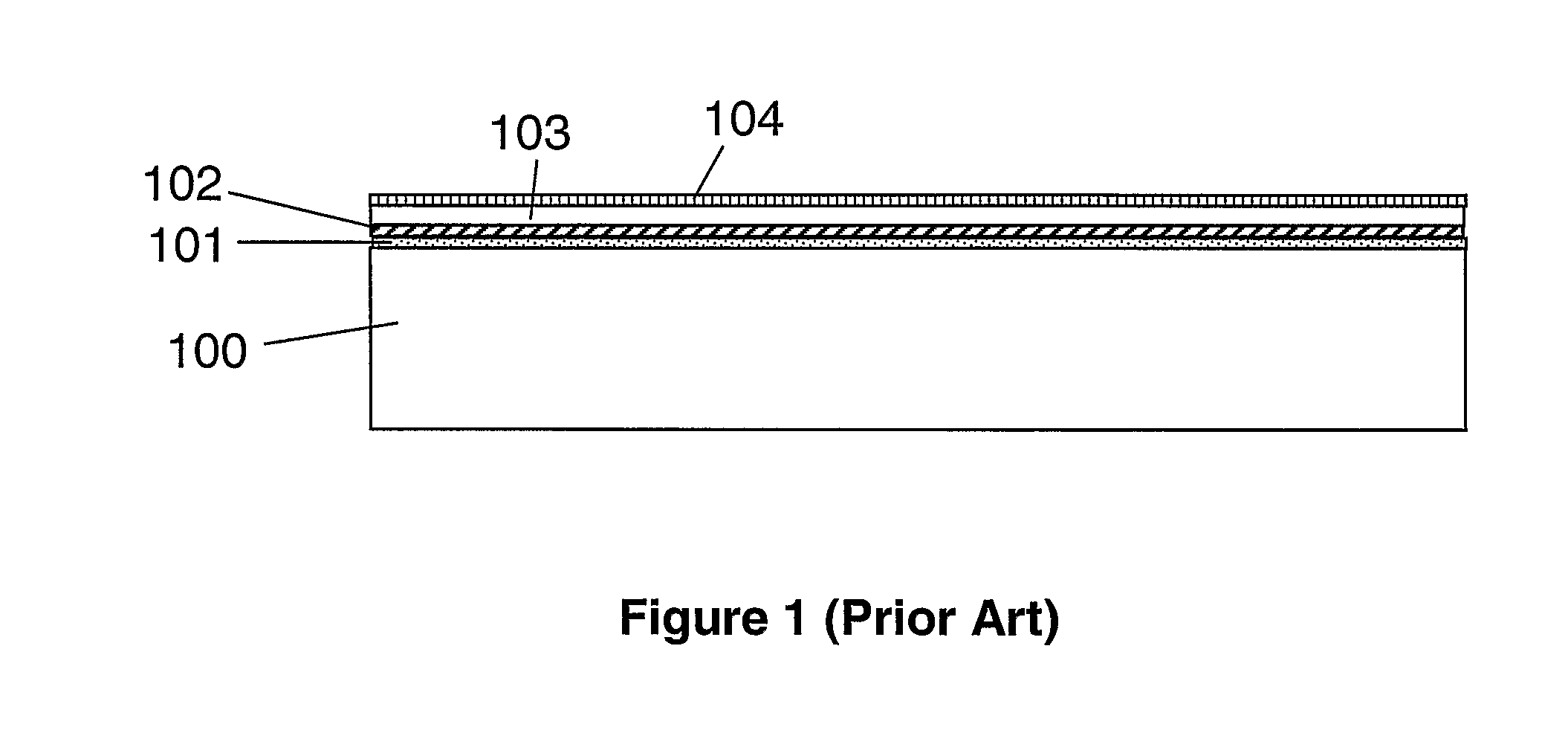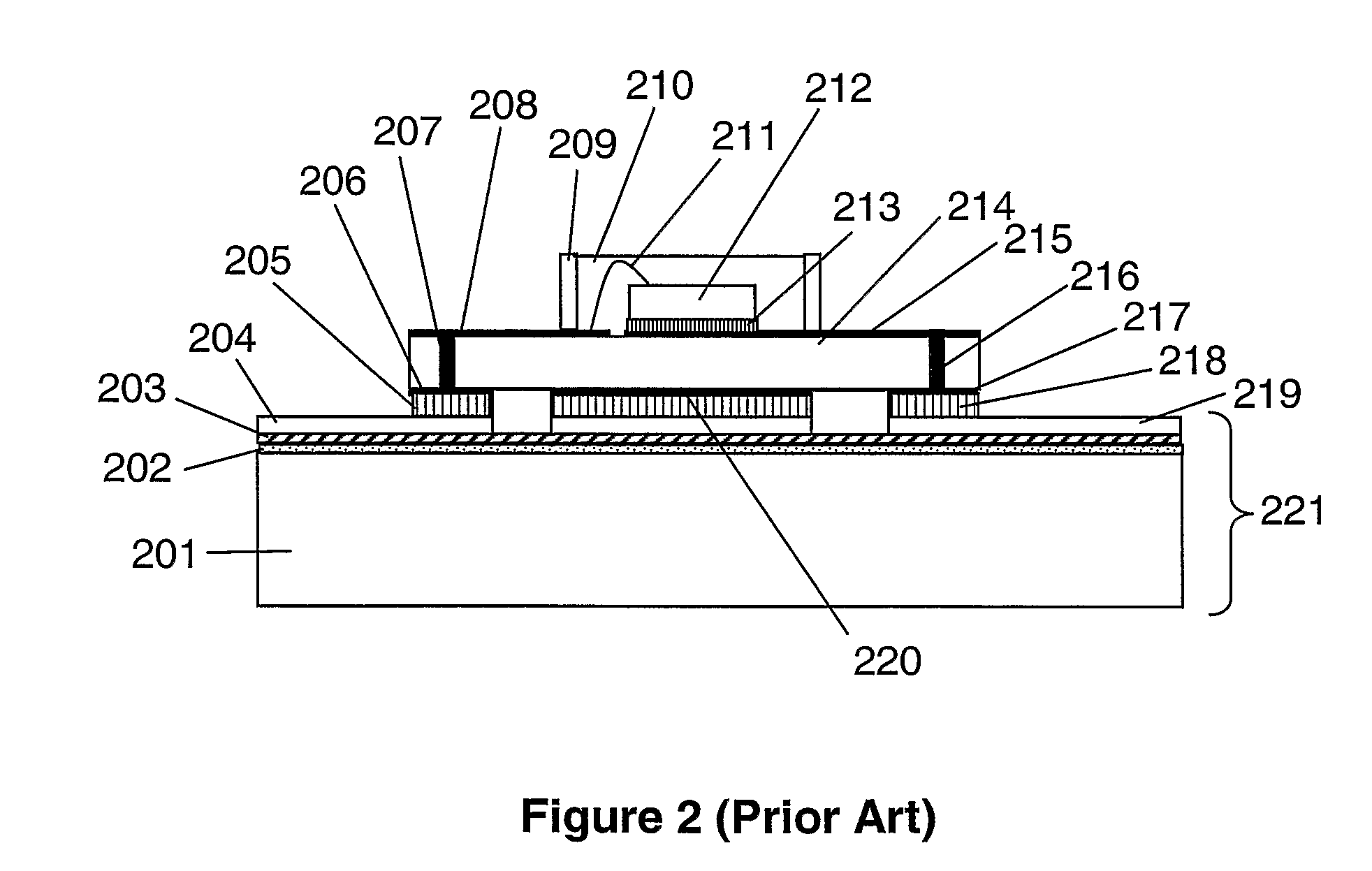Ultra high thermal performance packaging for optoelectronics devices
a technology of optoelectronics and packaging, applied in the direction of liquid/solution decomposition chemical coating, semiconductor/solid-state device details, superimposed coating process, etc., can solve the problem of high power density generated inside the material, local heating effect, and never unity of the efficiency of the wall plug device, so as to reduce the thermal resistance of the led junction to the heat spreader
- Summary
- Abstract
- Description
- Claims
- Application Information
AI Technical Summary
Benefits of technology
Problems solved by technology
Method used
Image
Examples
Embodiment Construction
[0055]Heat is a form of energy that is related to vibration at the molecular level, and is a by product of many processes. In the case of LEDs, this includes the recombination of photons in a semiconductor bandgap. Since LEDs and many other electronic components are sensitive to heat, it is important to remove excess heat that will adversely impact performance. In traditional light sources, such as incandescent lights, only a small proportion of the electrical energy is actually converted to useful light. The majority of the energy is converted to heat that must be removed from the light source. The heat energy may be transferred in one of three ways, namely by conduction, convection or radiation.
[0056]Conduction is the method in which heat energy is transferred between two objects that are in contact with one another. Convection is the process by which heat is transferred through the movement of gas or liquid from an area of higher temperature to one of lower temperature. Hot air r...
PUM
| Property | Measurement | Unit |
|---|---|---|
| thermal conductivity | aaaaa | aaaaa |
| thickness | aaaaa | aaaaa |
| thickness | aaaaa | aaaaa |
Abstract
Description
Claims
Application Information
 Login to View More
Login to View More - R&D
- Intellectual Property
- Life Sciences
- Materials
- Tech Scout
- Unparalleled Data Quality
- Higher Quality Content
- 60% Fewer Hallucinations
Browse by: Latest US Patents, China's latest patents, Technical Efficacy Thesaurus, Application Domain, Technology Topic, Popular Technical Reports.
© 2025 PatSnap. All rights reserved.Legal|Privacy policy|Modern Slavery Act Transparency Statement|Sitemap|About US| Contact US: help@patsnap.com



